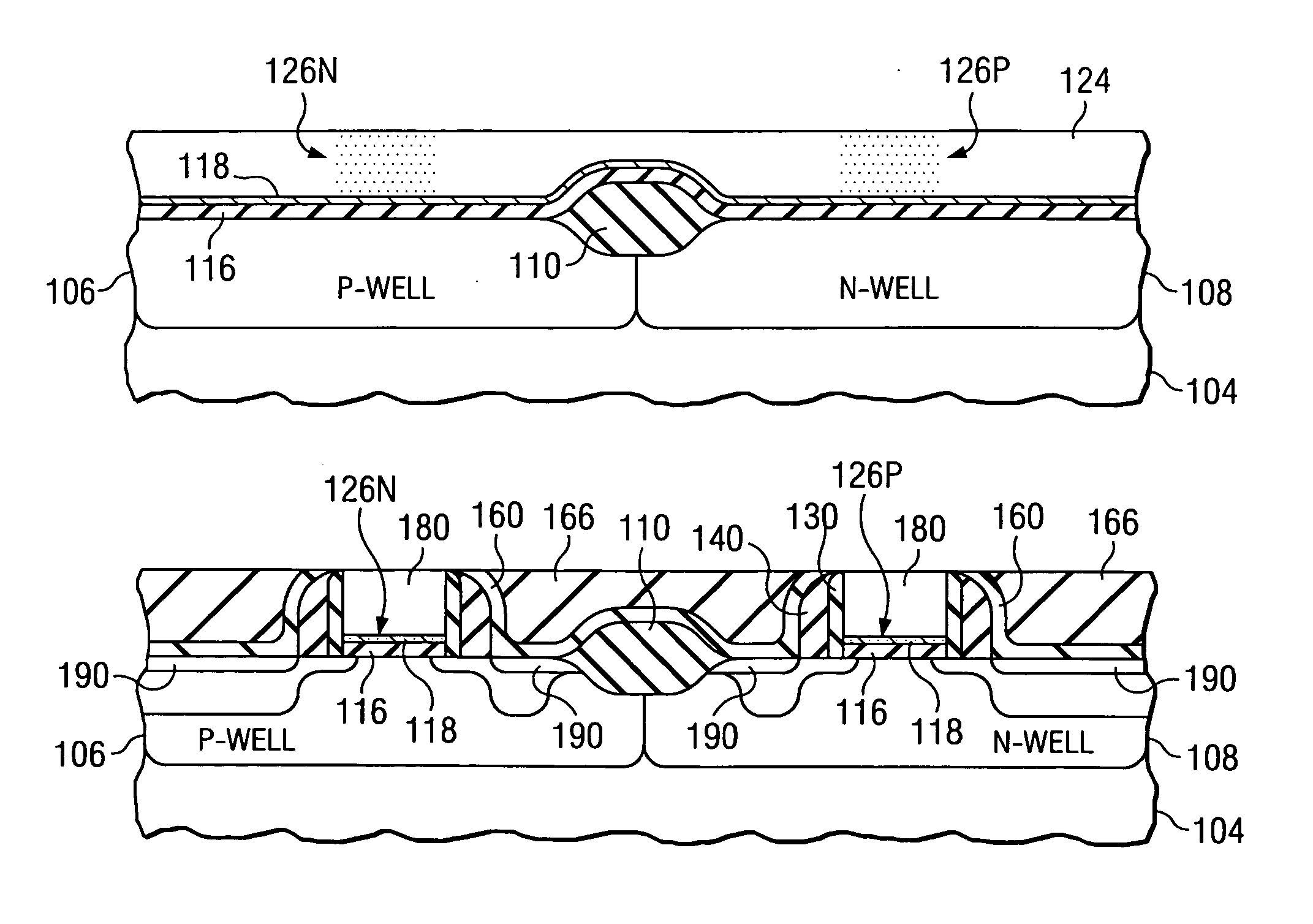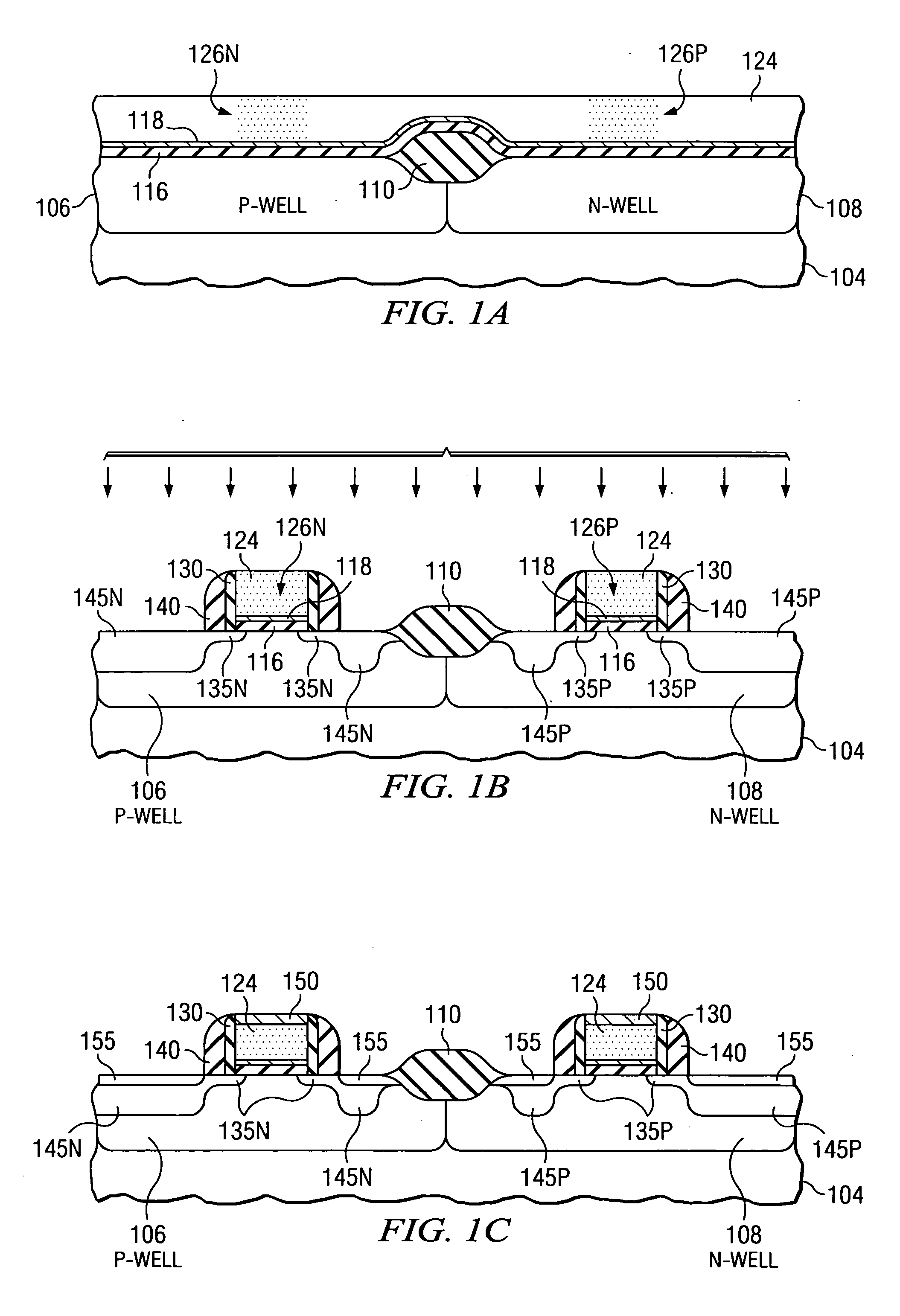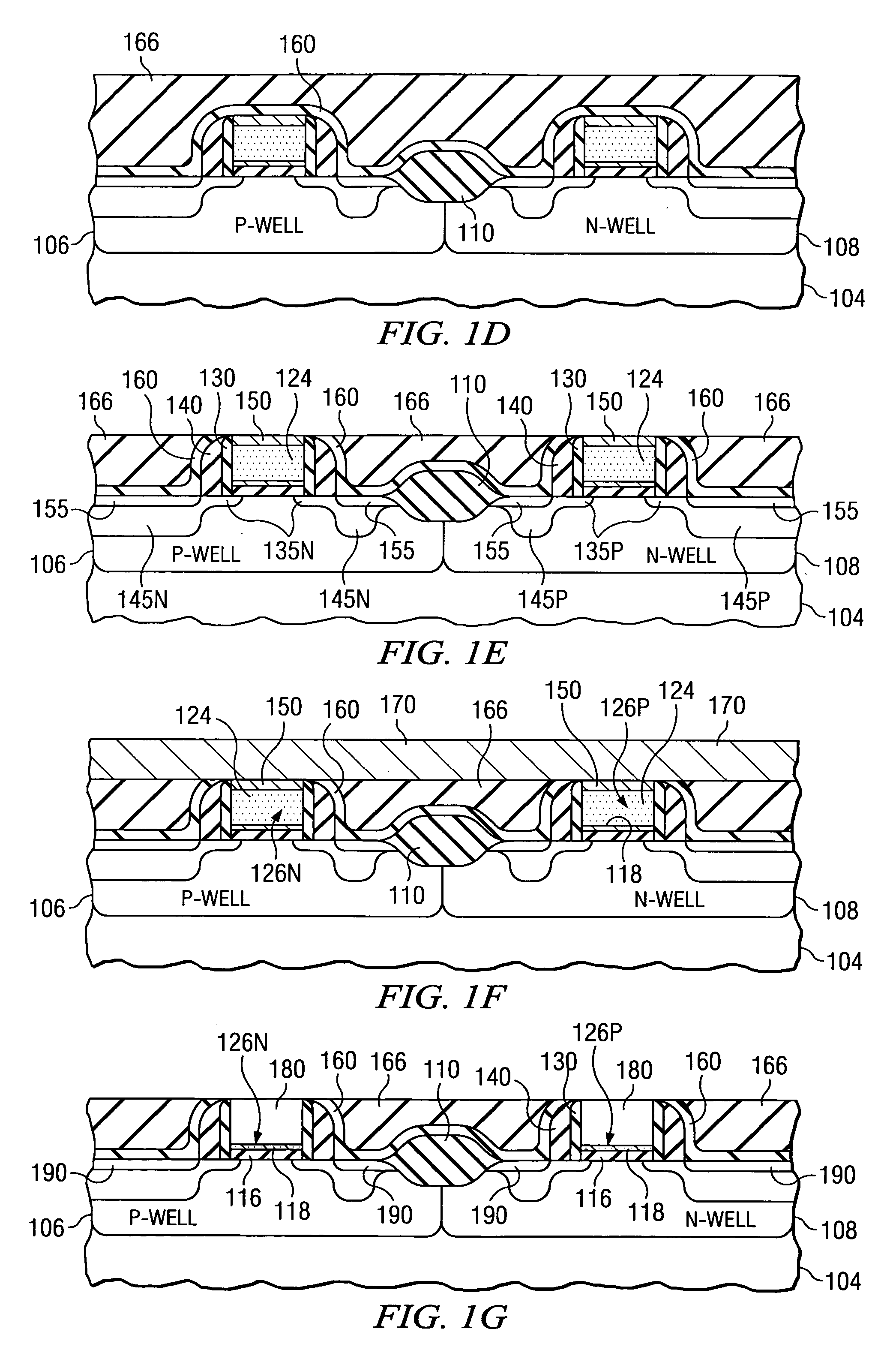Transistors, integrated circuits, systems, and processes of manufacture with improved work function modulation
a technology of integrated circuits and transistors, applied in the direction of basic electric elements, electrical apparatus, semiconductor devices, etc., can solve the problems of reducing the degree of power dissipation, limiting the extent to which siosub>2 /sub>gate dielectrics can be made thinner, and affecting the effect of power dissipation
- Summary
- Abstract
- Description
- Claims
- Application Information
AI Technical Summary
Benefits of technology
Problems solved by technology
Method used
Image
Examples
process examples
FOUR CATEGORIES OF PROCESS EXAMPLES
[0119] In summary, among other process and structure embodiments described herein, four categories of alternative process examples contemplated are designated Categories I, II, III and IV.
[0120] I. FIGS. 1A-1G and FIG. 2 illustrate structures and process steps in Category I embodiments, which do a prior higher-temperature activation anneal followed by simultaneous silicidation of gate stack and S / D at lower temperature. In a Category 1A, that simultaneous silicidation begins with enough nickel to produce NiSi monosilicide gate and NiSi monosilicide S / D). Silicidation of the gate poly into nickel monosilicide (NiSi) drives gate dopants into the barrier layer thereby advantageously multiplying dopant concentration relative to the poly precursor. In a Category 1B, that simultaneous silicidation begins with about half as much nickel to produce NiSi2 nickel disilicide gate but still produces NiSi monosilicide S / D. Silicidation of the gate poly into nic...
PUM
| Property | Measurement | Unit |
|---|---|---|
| width | aaaaa | aaaaa |
| thickness | aaaaa | aaaaa |
| work function | aaaaa | aaaaa |
Abstract
Description
Claims
Application Information
 Login to View More
Login to View More - R&D
- Intellectual Property
- Life Sciences
- Materials
- Tech Scout
- Unparalleled Data Quality
- Higher Quality Content
- 60% Fewer Hallucinations
Browse by: Latest US Patents, China's latest patents, Technical Efficacy Thesaurus, Application Domain, Technology Topic, Popular Technical Reports.
© 2025 PatSnap. All rights reserved.Legal|Privacy policy|Modern Slavery Act Transparency Statement|Sitemap|About US| Contact US: help@patsnap.com



